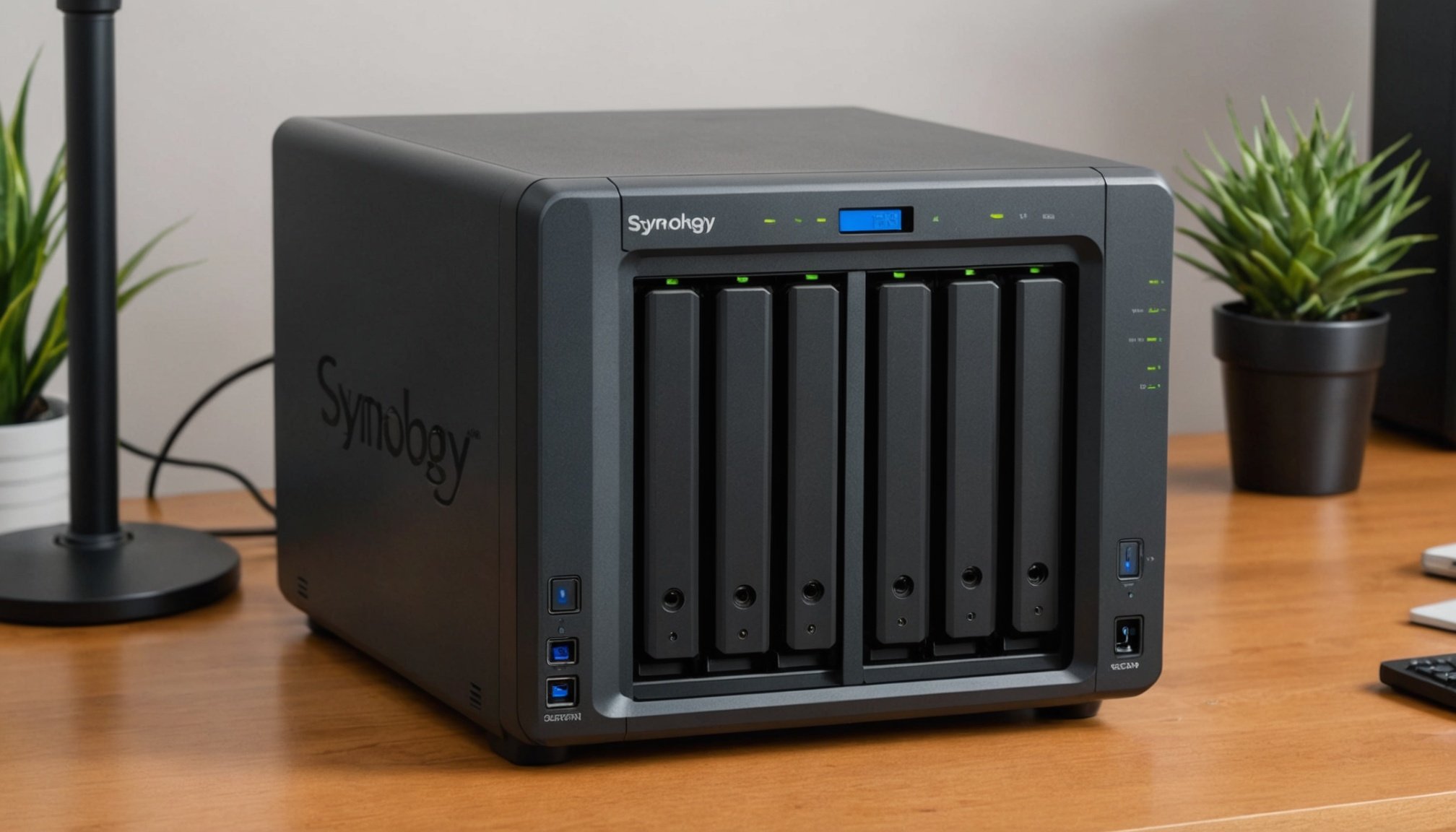Optimizing Storage Capacity
In a home office NAS configuration, optimizing storage capacity is crucial for maintaining efficiency and organization. The Synology DS918+ setup offers robust solutions for storage optimization, enabling users to tailor their setup to specific needs. One of the key features is the configuration of RAID setups. Various RAID configurations, such as RAID 1, 5, or 6, can be implemented to balance redundancy and storage efficiency. RAID 1 mirrors data for redundancy, while RAID 5 and 6 distribute data across multiple drives, offering better space utilization and fault tolerance.
When organizing files and folders, adopting a methodical approach can significantly enhance space utilization. Consider creating top-level directories for important categories, such as work, media, and personal documents. Within these, clear sub-folder structures can further streamline data retrieval and management.
Also to read : Ultimate guide to silencing your home recording studio using a tailored pc configuration
Implementing these storage optimization practices in your Synology DS918+ ensures that your home office NAS configuration remains organized and scalable. Managed correctly, this setup not only prevents data loss through redundancy but also simplifies file management, making it easier to navigate and efficiently use storage resources.
Effective Backup Strategies
In today’s digital world, ensuring your home office’s data is securely backed up is paramount. Employing Synology backup techniques presents a robust solution. Begin with a step-by-step guide for setting up automatic data backups using the Synology DS918+. Firstly, access the DiskStation Manager (DSM) interface and navigate to the “Control Panel”. Select “Backup” followed by “Shared Folder” to initiate the necessary processes. This facilitates continuous protection without manual prompts.
Also read : Mastering 4k streaming: essential tips to perfectly link qnap ts-451+ nas with plex media server
When choosing backup software, it’s critical to focus on compatibility with Synology. Recommended tools include Hyper Backup and Active Backup for Business. Hyper Backup allows incremental backups, meaning only changes since the last backup are saved, optimising storage use. Meanwhile, Active Backup offers comprehensive protection across workstations and virtual environments.
Equally important is the implementation of offsite backups. Offsite storage prevents data loss in case of local disasters, providing an additional layer of home office data protection. Synology devices excel in cloud integration, allowing seamless linkage with providers such as Amazon S3, Dropbox, and Google Drive. By following these strategies, you’ll ensure that your invaluable data remains safe, both onsite and in the cloud.
Streamlining Workflows
Enhancing workflow optimization with the Synology DS918+ can significantly boost productivity, especially in remote settings. Incorporating DS918+ with productivity tools such as Microsoft Office or Google Workspace provides a seamless environment for file sharing and collaboration. Here’s how: Synology user tips suggest integrating these services directly with NAS to enable real-time updates, ensuring everyone is on the same page.
Consider specific use cases such as project management where timely document access is crucial. The DS918+ facilitates this by allowing shared folders and permissions, maintaining an efficient workflow. For instance, team members can effortlessly co-edit documents saved on the NAS, eliminating the need for back-and-forth emails.
Additionally, streamlining remote access for home office employees is key to maintaining productivity. By employing Synology’s QuickConnect feature, users can securely access files from anywhere. This ensures that critical documents and resources are always within reach, promoting continuous operations regardless of employee location.
In summary, the DS918+ not only enables efficient workflow optimization but also empowers users to maximise their work efficiency through integrated, user-friendly solutions. These features make it an indispensable tool for modern work environments.
Software Integrations and Applications
The Synology software options available for the DS918+ offer a variety of essential applications that bolster productivity and streamline tasks. Synology’s Package Center is the starting point for installing these applications. It provides a user-friendly interface to browse and select from multiple NAS applications that enhance the device’s capabilities.
Once you have your essential apps, configuring third-party applications is key to optimising your Synology NAS. The process typically involves:
- Ensuring compatibility with your Synology model.
- Following the installation instructions via the Package Center.
- Adjusting settings to suit your specific needs.
A major highlight of the Synology ecosystem is its productivity software integration. Applications such as Synology Office cater to team collaboration by allowing real-time document sharing and editing. These tools are crucial for businesses looking to enhance teamwork and ensure seamless communication.
Synology’s built-in software is designed to streamline a range of tasks, from data management to media streaming. By leveraging these options, users can significantly enhance their NAS experience. The combination of built-in and third-party software thus equips the DS918+ to handle varied demands efficiently.
Security Measures for Data Protection
Ensuring data security for your Synology DS918+ against potential threats is crucial. One of the best practices involves implementing robust data protection strategies by configuring user permissions and access controls. Establishing who can access what data and assigning permissions accordingly shields sensitive information from unauthorised access. Synology security practices often recommend layering security to build a more resilient system.
Another critical element is regularly updating your firmware and software. Synology continuously works on improving security features to combat new vulnerabilities. Frequent updates can significantly enhance protection, keeping your device resilient against evolving threats. These updates often include patches for security loopholes, ensuring the system remains robust against malicious attacks.
Moreover, adopting strong passwords and enabling two-factor authentication adds an extra layer of security, protecting user credentials from cyber-attacks. Synology’s security advisor can help identify vulnerabilities and suggest improvements, supporting strong data protection strategies proactively.
By following these security measures, you not only safeguard your data but also harness the full potential of your Synology DS918+ device in a secure manner. Taking preventive actions is essential to minimise risks and ensure data integrity without disrupting accessibility.
Common Pitfalls to Avoid
When managing a Network Attached Storage (NAS) system, several challenges can arise if proper procedures aren’t followed. NAS challenges often result from inadequate understanding of the system’s requirements and functionality. One frequent issue is the Synology troubleshooting process, which many find daunting due to its technical complexities. However, navigating these challenges becomes feasible with the right approach.
A common pitfall in data management is neglecting regular maintenance. Overlooking routine checks can lead to severe consequences, such as data corruption or loss. Implementing regular maintenance practices safeguards your data integrity and prolongs the system’s lifespan.
Another frequent error involves misconceptions regarding network storage setups. Users often underestimate the impact of incorrect configurations on performance. For instance, incorrect RAID setups can compromise data redundancy and degrade system efficiency. Adequate understanding of the specific configuration needs of your NAS is crucial to avoid unnecessary performance issues.
Thus, understanding the root causes of these complications can enhance troubleshooting capabilities and performance outcomes in network storage systems. By proactively addressing NAS challenges and refining data management practices, users can effectively leverage their Synology systems with decreased risk of running into common pitfalls and maximise their system efficiency.






